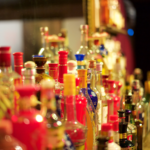It turns out antibiotic-resistant bacteria are far more ubiquitous than previously thought. A new study published in the Canadian Journal of Microbiology tested the prevalence of antibiotic-resistant bacteria in four aquatic environments in southern Ontario—and found them everywhere.
Antibiotic-resistant bacteria are bacteria that are unaffected by the drugs designed to kill them. Some researchers say this resistance is one of the most urgent threats to public health, as medication typically given for common ailments such as infections and pneumonia are rendered obsolete.
“We don’t want to lose the ability to use antibiotics to treat people,” said Dr. Kimberley Gilbride, biology professor and co-author of the study. While antibiotic-resistant bacteria are commonly researched in the medical setting, little research has been done in the natural environment where the bacteria are common.
About 10 years ago Gilbride had a student that needed a research project. She thought an easy one would be to collect water from a local creek and the student could look for antibiotic-resistant bacteria.
“And wow! There was a lot of that bacteria in that water,” said Gilbride. After 10 years of data collection, the research team finally had enough data to publish the paper.
The researchers collected water at lake and river sites in southern Ontario. They found the percentage of bacteria that was resistant to the antibiotic tetracycline was between 0.06% and 0.79%, with river sites having a higher prevalence of tetracycline-resistant bacteria than in lakes.
Although use of tetracycline is not as common as it once was, the drug is used for acne, cholera, brucellosis, plague, malaria, and syphilis and is still used extensively in agricultural husbandry. Since the river samples flowed through farmland, it’s possible that the farmland contained tetracycline residues that promoted higher levels of bacterial resistance. However, tetracycline resistance was lower in all samples compared with Toronto wastewater treatment system samples, where frequencies varied from 0.13% to 7.18%.
Bacteria maintain genetic diversity through something called horizontal gene transfer which, in short, involves bacteria trading segments of their genetic material so that the genes coding for antibiotic resistance easily spread across different kinds of bacteria. Exactly how and where pathogens obtain these genes is still unclear.
Gilbride said the genes from antibiotic resistance bacteria are everywhere. “They aren’t just in pathogens. They’re in the run-of-the-mill bacteria that really just do their own thing” she said.
Although we’re in contact with the antibiotic-resistant bacteria, they aren’t usually harmful. If ingested, Gilbride said they just go in one end and out the other. However, the antibiotic-resistant bacteria from the natural environment can mix with pathogens coming from the wastewater treatment plant.
It’s possible, said Gilbride that this close contact is where a pathogen picks up a gene from the antibiotic-resistant bacteria, and that same pathogen eventually leaves the wastewater system and goes into the natural environment, such as into a lake. The antibiotic-resistant pathogen could then infect swimmers or recreational water users.
“I love to tell my students, they [the bacteria] are having a party. The bacteria are being well-taken care of because the poop keeps coming in. They [the bacteria] are eating well,” said Gilbride. “Now, we haven’t proven any of that. But that’s maybe how they’re passed.”
Even though new antibiotics are being manufactured, genes resistant to the new drugs keep popping up. To help keep antibiotics effective, it’s important to limit their use. Many researchers ask people to refrain from using antibiotics unless necessary and for doctors to prescribe them less.
Gilbride said there is much research needed in understanding how antibiotic-resistant genes are transferred. With more research, she hopes that measures can be put in place to either stop or reduce the chances of transfer.
Read the paper: Widespread detection of antibiotic-resistant bacteria from natural aquatic environments in southern Ontario in the Canadian Journal of Microbiology.




